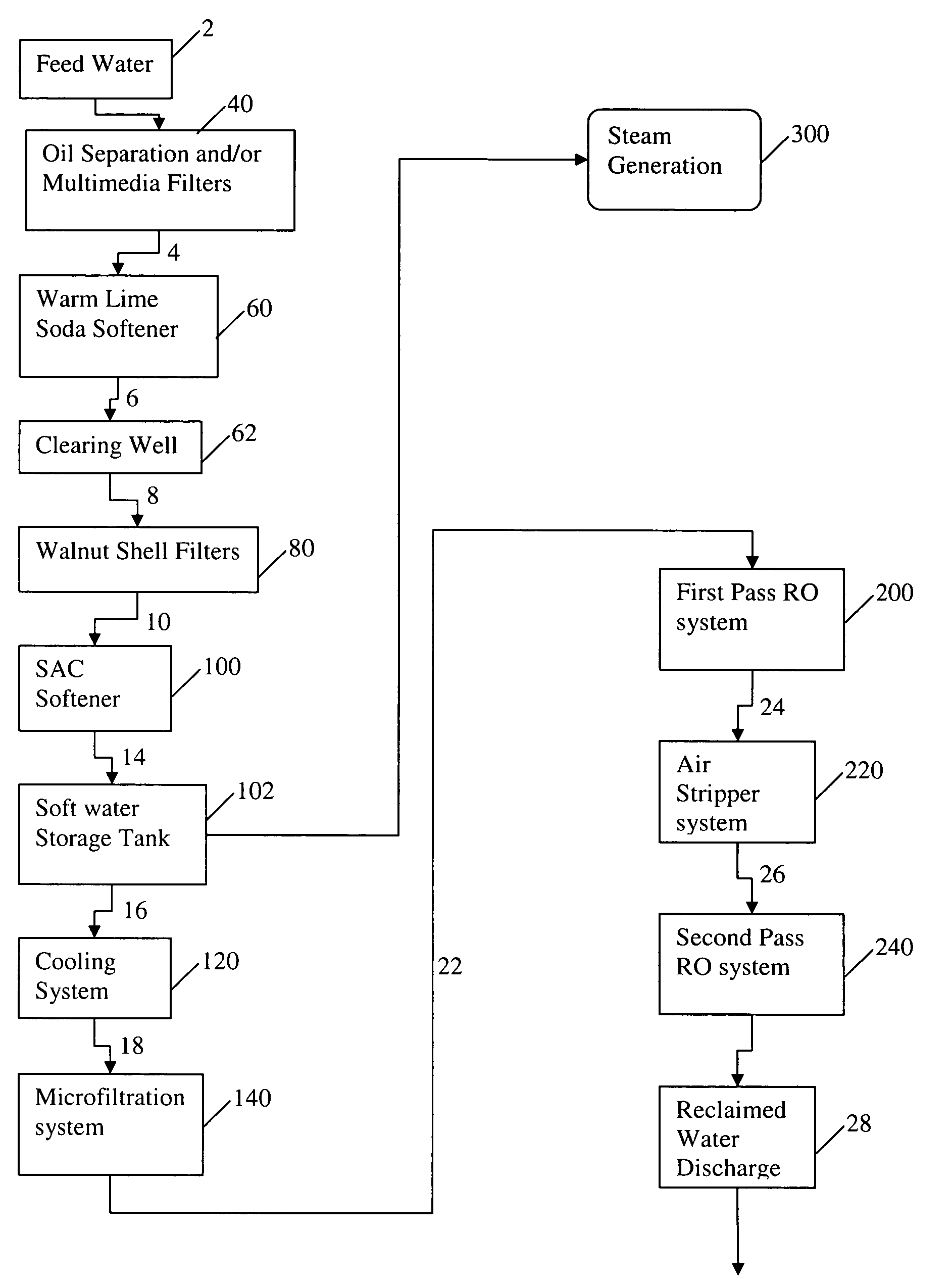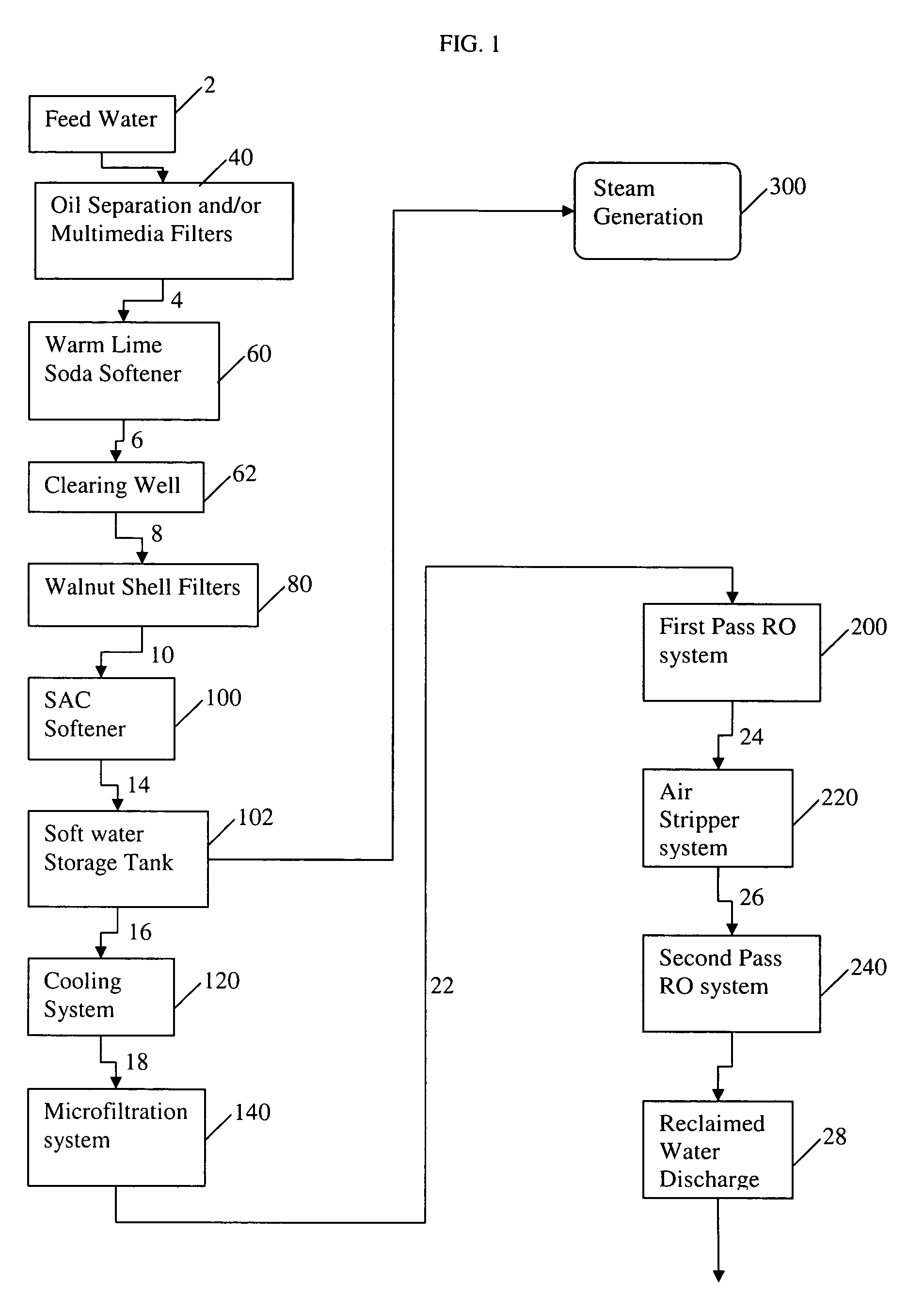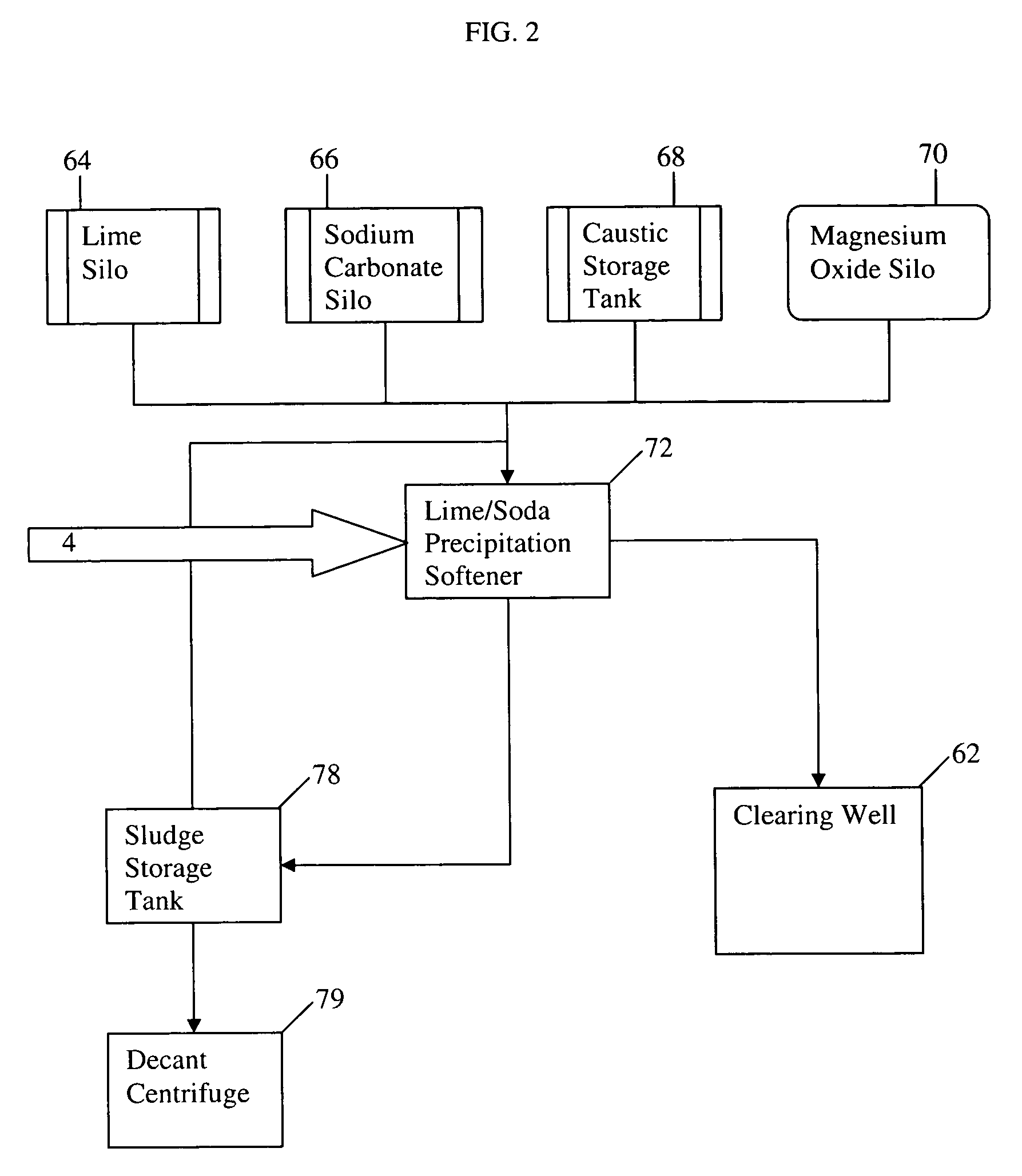Water treatment process for oilfield produced water
a technology for oilfield production and water treatment, applied in water/sewage treatment by ion exchange, dialysis systems, borehole/well accessories, etc., can solve the problems of increased injection pressure, difficult surface discharge of produced water, and difficult disposal of produced water
- Summary
- Abstract
- Description
- Claims
- Application Information
AI Technical Summary
Benefits of technology
Problems solved by technology
Method used
Image
Examples
example i
[0047]In an exemplary embodiment, a water treatment system as illustrated in FIG. 1 is designed. The designed flow rate of the warm lime softener system is about 2,095 gpm. The calculated Quicklime addition required is about 657.2 ppm as calcium oxide (CaO), where about 495.8 ppm is used for calcium, magnesium, and carbon dioxide removal as well as pH adjustment and about 161.4 ppm is added in excess. Since powdered Quicklime contains about 90% CAO this requires about 689.5 ppm of powdered Quicklime. The Quicklime will be slaked and diluted to a slurry between 5% and 12% by weight. The lime slurry will be circulated in a loop at a flow rate to maintain a desired pipe velocity and the required flow rate of slurry to provide the stated dosage will be metered from the described slurry flow loop.
[0048]The total calculated soda addition is about 275 ppm or about 397 gph (about 6.62 gpm), where the soda is added as a 10% wt solution. This system is designed to add soda at a maximal flow r...
PUM
| Property | Measurement | Unit |
|---|---|---|
| temperature | aaaaa | aaaaa |
| temperature | aaaaa | aaaaa |
| pH | aaaaa | aaaaa |
Abstract
Description
Claims
Application Information
 Login to View More
Login to View More - R&D
- Intellectual Property
- Life Sciences
- Materials
- Tech Scout
- Unparalleled Data Quality
- Higher Quality Content
- 60% Fewer Hallucinations
Browse by: Latest US Patents, China's latest patents, Technical Efficacy Thesaurus, Application Domain, Technology Topic, Popular Technical Reports.
© 2025 PatSnap. All rights reserved.Legal|Privacy policy|Modern Slavery Act Transparency Statement|Sitemap|About US| Contact US: help@patsnap.com



